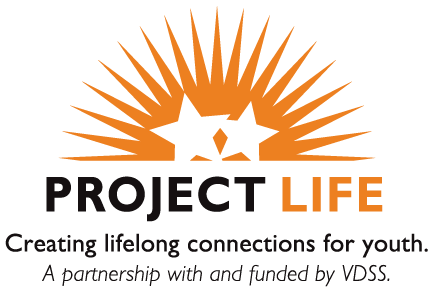HOUSING
“Housing is so much more than just a place to stay. It’s being clean, having food, a bed to sleep in, and the comfort in knowing you have somewhere safe. Housing makes a tremendous impact on all the other aspects of your life.”
DEVITTA, former foster youth who experienced homelessness
Housing
Housing factors to consider
When choosing a living arrangement, you should think about three factors:
- The area they would like to live in. It is important to consider where your support system is, such as permanent relationships, and if transportation is nearby so you can get to work or school. Some neighborhoods are more expensive to live in but, if important support services or people who help you are nearby or transportation to school and work costs less, you may want to pay the extra money and live in a smaller place.
- How much money do you have? It’s important to save money before leaving the foster care system. Moving into an apartment or room has upfront costs, such as a security deposit, fees for turning on utilities and buying basic furnishings.
- How well can you take care of yourself? You need to realize the responsibilities you will be assuming, from washing dishes to doing the laundry and ability to make sure you can access the supplies you need.
Do youth leaving care have to live on their own?
Some youth in foster care can continue to live with their foster parents or other family members. If you have a permanent relationship with someone who is willing to provide a place to live, that’s good. But, if you can’t or don’t want to continue living as part of a family, you must develop a plan for how they will live on their own.
What are the housing choices you have?
A young person may be able to rent a place to live without any financial help. But it is likely that you may have to consider other options, such as renting a furnished room rather than an apartment. Or you may want to consider living with a roommate in order to split the costs. If you are going to school, on-campus options may be available.

My Own Apartment
Finding an apartment can be difficult for young people starting out. Some landlords do not rent to tenants who do not have references, a good credit history and a job, so finding an apartment can take time. If you can show that you are a responsible person and have proof of a steady income, you probably can find one more quickly.
The start-up costs of an apartment are high, usually first and last month’s rent and a security deposit. You may be asked to fill out an application so the landlord can check your references and your credit history. If you are approved, you will have to have utilities, such as electricity and internet connections turned on. Some of these will also ask you for a security deposit.

A House with Roommates
A friend you enjoy going to the movies with may not be the best choice for a roommate. When you live with someone, you have to agree about a lot of things, like how to split food costs. You also need to have goals that are similar. If one person likes to party and the other wants to study, it may not work out at all. There are a lot of pieces to consider. A “Let’s do it!” and a high five are not enough to set up a roommate deal. You need to consider big things like who will sign the lease and the contract for utilities, and who will be responsible for making sure that the money actually gets to the landlord and electric company when it’s due. You will also need to think about:
Will you be able to get along when you have to share chores and expenses, and not just have fun together?
How do you handle a conflict?
Do you keep the same hours?
Enjoy the same things?
Is one of you a smoker and the other a non-smoker?
Does one value quiet and the other want to have lots of friends over?
How will you divide the costs of living?
Will you share food or each buy your own?
Do you need to buy furniture?
Who will make sure that the bills get paid?
Do you need an agreement about visitors?
Will overnight or long-term guests be allowed without any discussion?
Will you have to get your roommate’s approval to have a party?
Will s/he have to get your approval for a party?
Who will do what?
When will chores get done?
What if chores aren’t done?
pro tip: Keeping your place clean can affect whether you will get your security deposit back.

On-Campus Housing
Many four-year and some two-year schools offer housing and optional meal plans to students. The rooms are usually furnished and shared with a roommate. Costs are different at each school. Campus housing is usually a convenient, safe and cheap option for students. On-campus housing gives you the chance to meet many new people but doesn’t offer much privacy. On some campuses, students may also be asked to leave campus during the semester breaks, which means you have to find someone to stay with during the holidays and the summer. If the school you attend has this policy, you need to plan where you will stay when on-campus housing is closed.
Assistance Affording Housing
Federal and state programs are available to help former youth in foster care obtain and retain housing.
The Chafee Program gives states money to help children aging out of foster care. Under current law, youth aging out of foster care are eligible for Chafee-funded services if they:
- Are likely to remain in foster care at least until their 18th birthday.
- Have aged out of foster care but are not yet age 21.
- Exited foster care through adoption or kinship guardianship when they are 16 years old or older.
Up to 30 percent of Chafee funds may be spent on housing subsidies, transitional housing, independent living stipends or other housing-related costs.
Family Unification Program (FUP)
FUP is a HUD program that provides a pool of housing choice vouchers and supportive services to families involved in the child welfare system who are experiencing housing problems, as well as to youth ages 18 – 21 who have aged out of foster care. The local public housing agency administers the program in collaboration with the child welfare agency. These vouchers are from a different pool from the FYI vouchers. See the tabs below to help determine if using a FUP voucher is the best choice for your youth.
Reasons for not using FUP – Although FUP vouchers for families are permanent, those for youth formerly in foster care expire after 18 months. Some Independent Living counselors are hesitant to use the vouchers because they do not feel the time period is adequate to provide a solid transition out of foster care. Some public housing authorities are not keen to use FUP vouchers for youth either. They feel the potential problems with youth tenants could jeopardize the housing authority’s relationship with landlords.
Reasons for using FUP – Some agencies that make use of FUP vouchers for youth do so as part of a broader strategy, using the 18-month period as a bridge to another program. In several cases, FUP provided the time necessary for the youth to clear the regular Section 8 waitlist. Some states give priority on the Section 8 waitlist to youth who have aged out of foster care, either immediately upon emancipation or at the termination of their FUP voucher.
The FUP requires that vouchers for youth be accompanied by services. These services are generally provided as part of the state’s Chafee services for transition-age youth. Chafee room-and-board funds can also be used for start-up costs, such as acquiring furniture.
Public Housing and Section 8 Housing Choice Voucher program
Housing Choice Voucher Program Section 8
Young people aging out of foster care in jurisdictions without an allocation of FUP vouchers, as well as those who are not eligible for or who do not receive a FUP voucher, may benefit from three other HUD programs for low-income individuals and families: the Public Housing Program, and privately owned, subsidized housing.
Public housing residents live in projects that are typically owned by a local public housing agency. The units are subsidized, usually so that tenants pay rent equivalent to only 30% of adjusted gross income. If the youth moves, the subsidy goes to the next resident.
Housing Choice Voucher recipients rent housing from landlords or property managers in the private housing market, and their subsidy is paid directly to the landlord or property manager. Like public housing residents, HCV recipients typically pay 30% of their adjusted gross income in rent. However, unlike public housing residents, they may live in any housing that meets minimum health and safety standards. Moreover, given that the voucher is attached to the tenant (i.e., tenant-based), it moves with the tenant if the tenant moves.
Low-income individuals and families may also live in subsidized apartments that are privately owned (i.e., project-based Section 8). Although tenants pay rent that is 30 to 40% of their adjusted gross income, the voucher is attached to the property (i.e., project-based); if the tenant moves, the voucher does not move with the tenant.
While none of these programs is designed to address the housing needs of young people aging out of foster care, the low income of many former youth in foster care makes them eligible for the programs. That said, the extent to which the programs can address the housing needs of young people aging out of foster care is limited. In most communities, the demand for housing assistance far exceeds supply. Waiting lists are long or even closed, motivating some public housing agencies to identify former youth in foster care as a preference group. Although young people who receive housing assistance from one of these programs rather than through FUP do not lose eligibility after 18 months, they also do not have direct access to the supportive services that former youth in foster care may need.
Any income-based housing assistance will be lost when the youth’s income exceeds the maximum allowed. Planning for that event is an important part of success. Having a plan for housing after a job promotion bumps them out of publicly financed housing can prevent homelessness.
Foster Youth to Independence (FYI) Initiative
The Foster Youth to Independence (FYI) initiative makes Housing Choice Voucher (HCV) assistance available to Public Housing Agencies (PHAs) in partnership with Public Child Welfare Agencies (PCWAs). Under FYI, PHAs provide housing assistance on behalf of:
Youth at least 18 years and not more than 24 years of age (have not reached their 25th birthday) who left foster care, or will leave foster care within 90 days, in accordance with a transition plan described in Section 475(5)(H) of the Social Security Act, and are homeless or are at risk of becoming homeless at age 16 or older.
As required by statute, an FYI voucher issued to such a youth may only be used to provide housing assistance for the youth for a maximum of 36 months. In addition to providing up to 36 months of rental assistance, youth must be provided supportive services to assist the young person on their path to self-sufficiency.
HUD makes FYI available through PHAs who may request assistance on a rolling basis under Notice PIH 2021-26. See the notice for an explanation of eligibility and application requirements.
Fostering Connections to Success and Increasing Adoptions Act
The Fostering Connections to Success and Increasing Adoptions Act of 2008 introduced several major reforms to federal child welfare policy. One requires child welfare agencies to help young people develop a personalized transition plan during the 90 days immediately before they age out of foster care. Housing is among the needs the plan must address. As of October 2010, eligibility for Title IV-E reimbursement was extended from 18 to 21 years old if youth are enrolled in school, working at least 80 hours per month, engaged in activities to promote employment or remove barriers to employment, or have a medical condition that precludes any of the above. As a result, states now have a financial incentive to allow young people to remain in foster care until their 21st birthday.
“I was homeless for two years. The majority of time, I stayed in shelters. I constantly moved. During the day, we had to be out in the community, which made it difficult due to the summer heat. I was sometimes hungry. The challenges of being homeless were being hungry, not having the luxury of showering when needed and knowing that I wasn’t completely safe.”
— DEVITTA, former foster youth who experienced homelessness
More Resources:
- PowerPoint Presentation on FYI Initiative by Ruth White, through Project LIFE and VDSS, 9/22/21.
- Public Housing Authority Contact List for Virginia.





